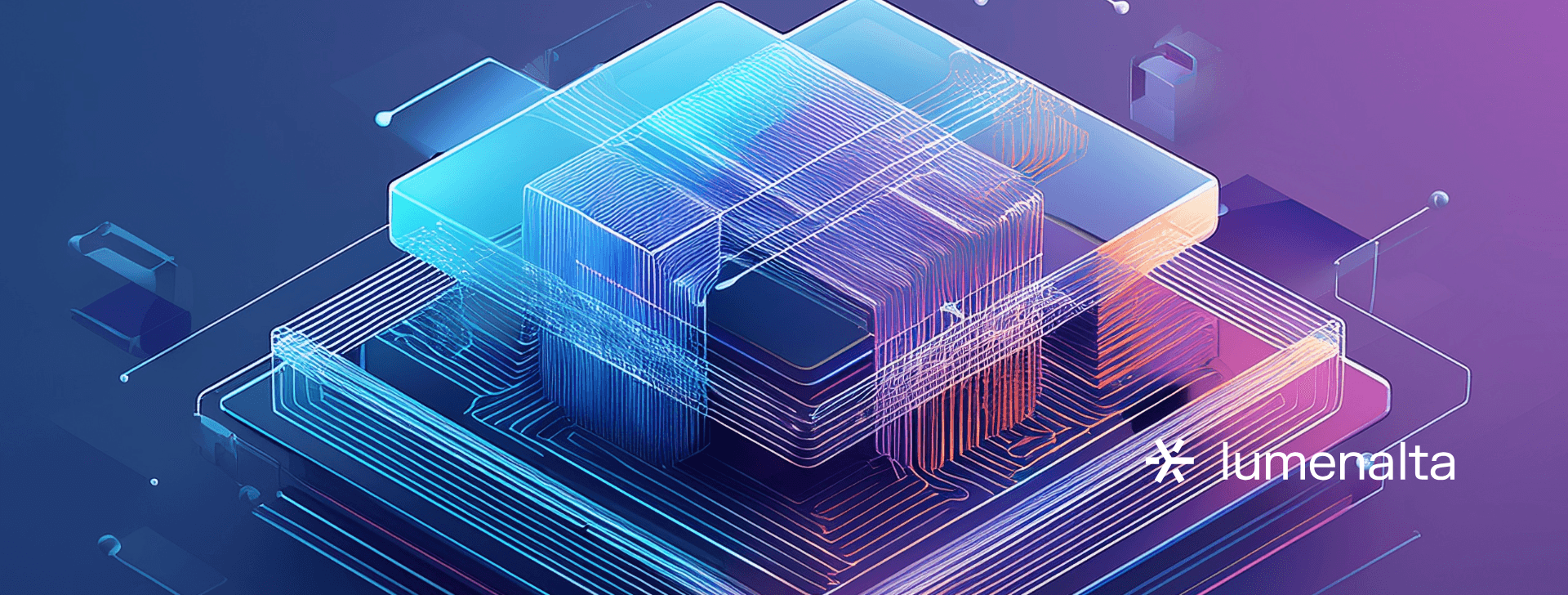

5 essential AI tools for Java developers in 2025
APR. 8, 2025
4 Min Read
AI-based solutions can reduce release cycles for Java projects and cut resource costs while improving code reliability.
Many organizations consider this a practical approach to keep pace with shifting business demands and maintain investor confidence. Development teams often find that AI tools for Java developers speed up refactoring tasks, improve test coverage, and promote consistent coding standards.
key-takeaways
- 1. AI-based solutions reduce coding errors and streamline repetitive tasks, improving speed to market.
- 2. Automated refactoring and test generation tools lower costs and enhance overall code quality.
- 3. Performance monitoring and reliability scoring keep Java applications stable under increased load.
- 4. Proper integration strategies include setting measurable KPIs, cross-team collaboration, and proactive governance.
- 5. Upfront planning helps manage data, security, and ROI concerns when implementing AI in Java projects.
Understanding AI tools for Java development

Many development teams working in Java see a significant boost in efficiency once they incorporate AI solutions that automate repetitive steps. AI-powered code completion and project automation features reduce manual intervention, saving time and resources for businesses seeking faster speed to market. Some teams struggle with manual code reviews, missing potential optimization opportunities that advanced AI solutions can detect far earlier. AI tools for Java developers now address these pain points by analyzing code for errors, performance bottlenecks, and even potential security vulnerabilities.
Many leaders in technology see these solutions as a direct pathway to more cost-effective development cycles and better alignment among stakeholders. Tools that rely on machine learning identify patterns in existing codebases, suggesting improvements that strengthen stability and performance. These improvements are vital for those looking to ensure ongoing relevance for their operations and increase investor confidence. Java developer tools that incorporate analytics and forecasting capabilities also offer measurable business impact, which is crucial for maximizing long-term returns.
"AI tools for java developers now address these pain points by analyzing code for errors, performance bottlenecks, and even potential security vulnerabilities."
5 essential AI tools enhancing Java development efficiency

Selecting the best AI tools for Java developers helps reduce guesswork in coding tasks and fosters greater project clarity. Many Java teams have discovered that robust automation options lower the risk of human error and cut down on repetitive tasks. These capabilities support faster feedback loops, giving organizations room to focus on strategic growth.
1. Predictive code completion
Take immediate action on repetitive coding tasks with predictive code completion, which uses machine learning to suggest relevant code snippets. This approach streamlines daily work by analyzing your existing code patterns, library references, and coding style. Many developers appreciate that it reduces time spent scrolling through documentation for syntax reminders. Using such a solution can result in fewer coding mistakes and more consistent design patterns across various modules.
Better code consistency increases reliability, leading to fewer urgent fixes late in the development cycle. Quantifiable improvements are often seen in metrics like reduced debugging hours and shorter release schedules. This type of AI-based tool supports cost-effective project delivery for businesses looking to maximize returns. Setting it up in your IDE platform requires minimal effort, and it yields significant time savings across the lifecycle of your Java applications.
2. Automated refactoring assistants

Adopt automated refactoring assistants to keep codebases efficient and maintainable. Some Java teams find that manual refactoring is time-consuming, especially when legacy systems include thousands of lines of code. AI-based algorithms can detect code smells, duplicated logic, and complicated class structures more quickly than a manual approach. This proactive solution frees up time for strategic planning, allowing your team to focus on higher-priority features.
Structured code is easier to scale, which aligns with the goal of delivering software faster to market. Many business leaders appreciate the predictable maintenance costs that come from stable and optimized code. Automated refactoring AI tools for Java developers also reduce the possibility of introducing new defects during large-scale restructuring. When combined with version control best practices, these assistants help you maintain continuous improvement across your projects.
3. AI-based test generation
Generate reliable testing scenarios with AI-based test generation features that analyze code paths and produce targeted test cases. Traditional test writing can miss critical edge conditions, which then surface later in production. This approach complements your existing quality assurance practices by identifying gaps in coverage at a deeper level. Relying on machine learning to build tests also helps your team standardize testing protocols, improving overall consistency.
Robust test coverage lowers the chance of unexpected production errors and can cut down on costly reworks after deployment. Many organizations report shorter feedback cycles when adopting automated test generation. Gains in project transparency are equally important for improving stakeholder confidence, particularly when seeking investment or approval for expansions. This method of test creation provides measurable reassurance that your Java applications are ready for real-time demands.
4. Intelligent performance monitoring
Monitor application health with intelligent performance tracking that uses advanced analytics to pinpoint memory leaks and slow response times. Releasing Java applications without thorough performance checks often results in lower user satisfaction and unexpected overhead costs. This approach provides a deeper look into how your code handles concurrency, resource allocation, and data throughput. Many teams integrate these insights into sprint planning, ensuring that performance enhancements are prioritized.
Continuous awareness of performance metrics enables stable growth, which benefits businesses looking to support more users and transaction volumes. Some business leaders see direct cost savings through optimized resource usage, especially in cloud-based deployments. Intelligent tools also facilitate capacity planning, helping your team avoid paying for unneeded infrastructure. These advantages translate into tangible returns on investment and reinforce the trust of stakeholders.
5. Code reliability scoring platforms

Raise quality standards with scoring platforms that measure code reliability through advanced pattern analysis. These tools assess each build or commit, producing a numerical ranking based on detected vulnerabilities, duplication, and complexity. Teams gain clear visibility into how daily changes affect stability and maintainability. A scoring system also highlights areas that need immediate attention, making it easier to prioritize short-term fixes.
A structured evaluation method supports better decisions for future feature development and resource allocation. Many businesses appreciate the transparent communication value, as code reliability scores can be shared with both technical and non-technical stakeholders. Java developer tools of this kind help sustain confidence across departments, especially if new updates involve major structural changes. Over time, consistent use of reliability scoring encourages a culture of continuous improvement and stronger alignment with business goals.
"When combined with version control best practices, these assistants help you maintain continuous improvement across your projects."
Challenges in integrating AI tools into Java development workflows
Teams often face complexity when blending new machine learning capabilities with established processes. Differences in development culture or stakeholder expectations can slow adoption. Some solutions require specialized skills or resources that not every organization can accommodate. Proper planning and alignment with business goals minimize these risks and help ensure a smoother transition.
- Data availability concerns: Many AI solutions rely on large datasets for training and optimization, but data quality and quantity may be insufficient.
- Resistance to change: Teams that are accustomed to traditional development methods might be hesitant to trust automated systems for tasks like code refactoring.
- Integration overhead: Coordinating AI tools with existing continuous integration and continuous delivery processes may require additional workflow adjustments.
- Security implications: Tools with data analysis capabilities could introduce vulnerabilities if they access sensitive code or proprietary company assets.
- Return on investment (ROI) uncertainty: Some executives seek measurable outcomes within tight deadlines, putting pressure on teams to justify every new tool.
Adapting to these challenges is not always straightforward, but a clear plan helps track costs and manage stakeholder expectations. Successful integration often depends on precise risk assessment and phased rollouts. Each obstacle can be addressed with a mix of technical expertise and open communication across departments. Many organizations discover that an upfront investment in resources and planning pays off with faster development cycles and higher project resilience.
Strategies for optimizing the use of AI tools in Java projects

Many businesses see immediate wins when they align AI-based processes with key performance indicators (KPIs). This alignment creates clarity around how to measure success, including shorter development cycles or lower error rates. AI tools for Java developers can then be evaluated on tangible metrics rather than assumptions. That approach helps unify teams around achievable benchmarks and ensures resources are deployed where they create the most impact.
Investing in training sessions for staff who will use these Java developer tools also eliminates friction. Business leaders benefit from a cohesive training plan that highlights best practices and security protocols before wide-scale adoption. This level of readiness often raises confidence across multiple teams and encourages more accurate cost projections.
Planning with clear metrics
Establish quantifiable targets, such as a specific percentage reduction in bugs or a measurable decrease in the average time to close tickets. Many technical leads partner with project managers to determine the exact KPIs that matter most, like reduced QA overhead or lower infrastructure costs. Data from these metrics guides resource allocation, so each investment yields a demonstrable payoff. Having transparent goals also strengthens accountability across teams.
Collaborating with cross-functional teams
Open communication channels among developers, testers, and stakeholders reduce delays when implementing AI solutions. Each group brings a valuable perspective that can highlight overlooked risks or opportunities. Aligning these insights ensures that AI tools fit seamlessly into existing workflows. This approach simplifies approvals for budget and resource requests, expediting results and reinforcing confidence in the initiative.
Incorporating governance and compliance
Set up guidelines that define acceptable code analysis practices, data usage, and integration points for AI-based solutions. Some organizations may require additional scrutiny from security specialists or legal teams to meet regulatory obligations. Clear governance also helps maintain consistent coding standards across multiple teams. When compliance frameworks are established from the start, you minimize delays and protect valuable business assets.
AI is not just a coding shortcut—it’s a direct route to faster, more aligned development. Automated processes and insightful analytics allow teams to focus on delivering value where it matters most: generating measurable results. At Lumenalta, we specialize in creating tailored AI and machine learning solutions for Java developers and supporting AI tools for Java developers, ensuring each project is set up for success. Charting a brighter path starts with a conversation about your specific goals and constraints.
table-of-contents
- Understanding AI tools for Java development
- 5 essential AI tools enhancing Java development efficiency
- 1. Predictive code completion
- 2. Automated refactoring assistants
- 3. AI-based test generation
- 4. Intelligent performance monitoring
- 5. Code reliability scoring platforms
- Challenges in integrating AI tools into Java development workflows
- Strategies for optimizing the use of AI tools in Java projects
- Common questions about AI tools for java developers
Common questions about AI tools for java developers
What are AI tools for Java developers, and why do they matter?
How can AI improve code reviews in Java projects?
Are the best AI tools for Java developers expensive?
Do AI solutions introduce security risks?
Can AI tools replace human developers in Java projects?
Want to learn how AI-led automation can lower costs and increase trust in your operations?










